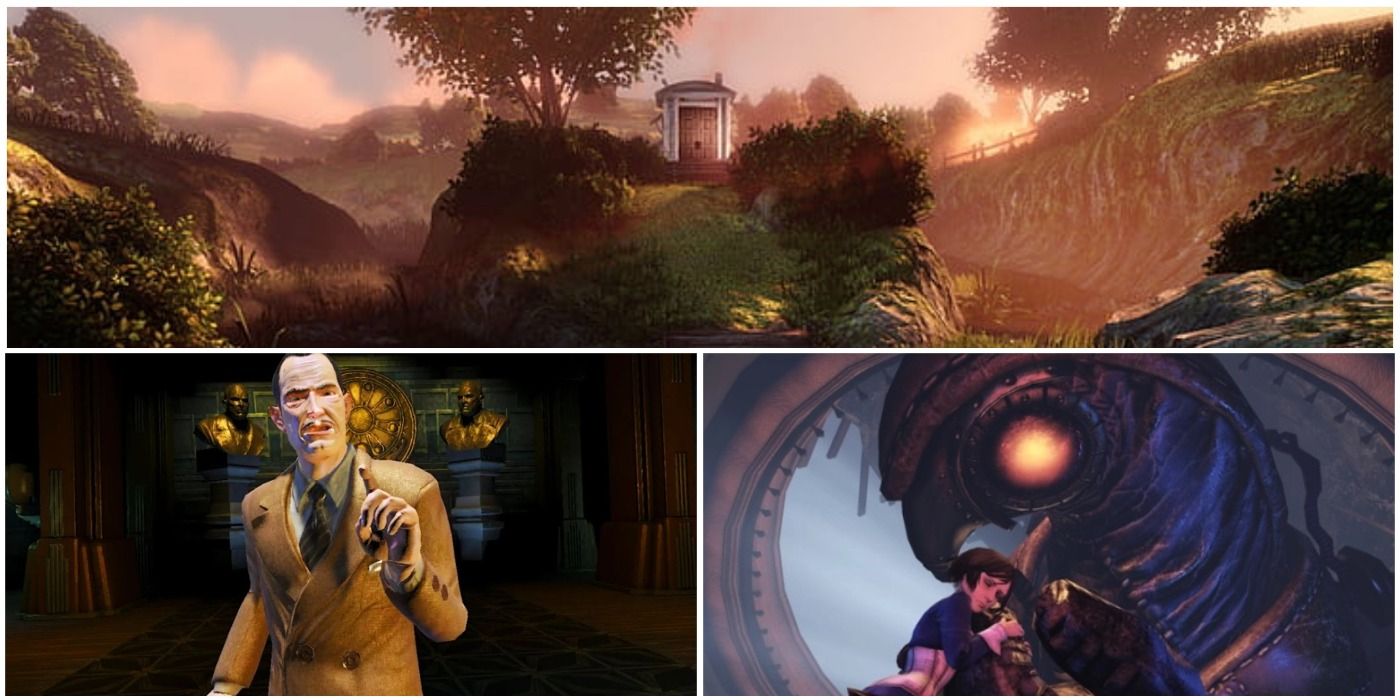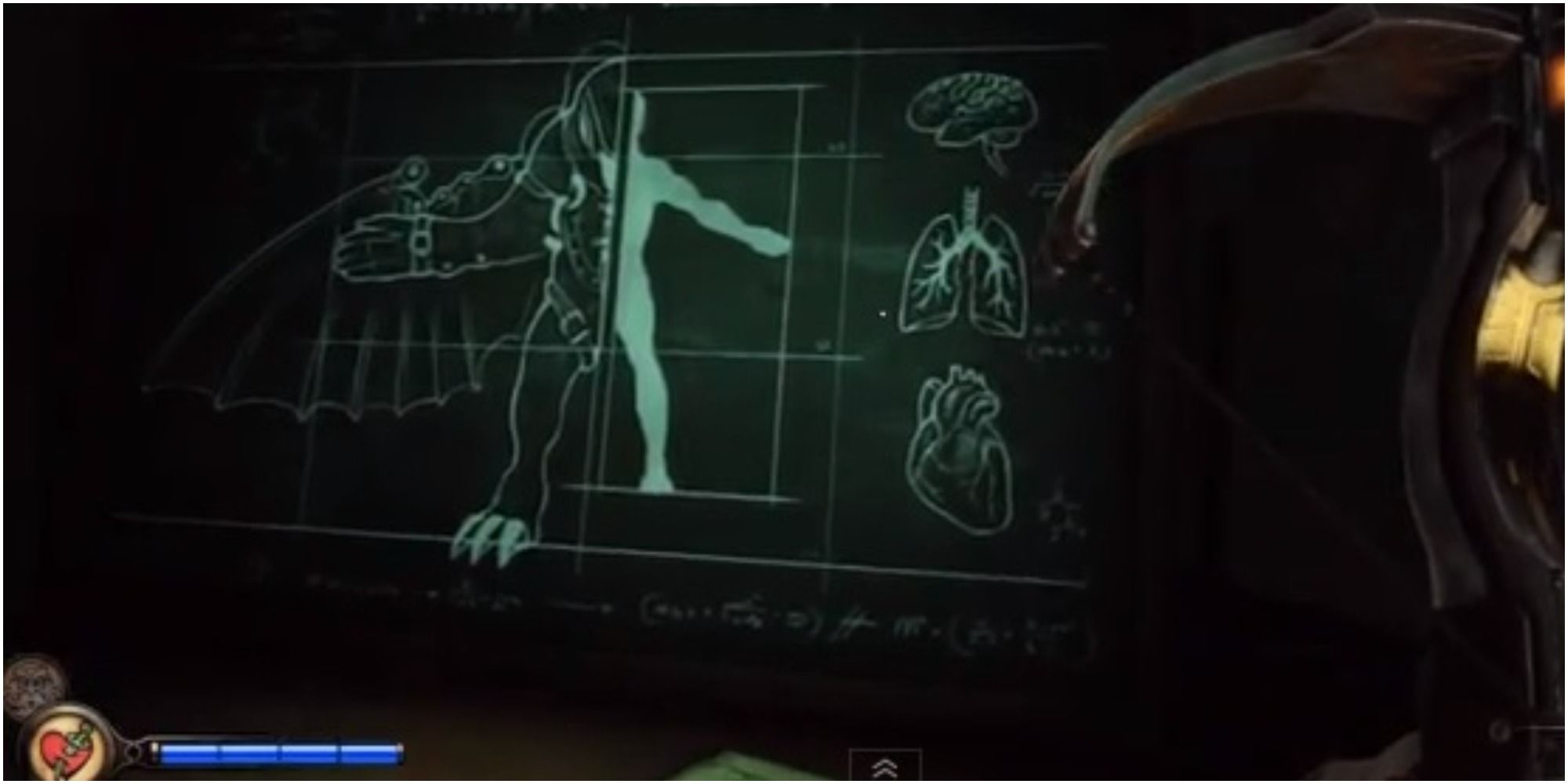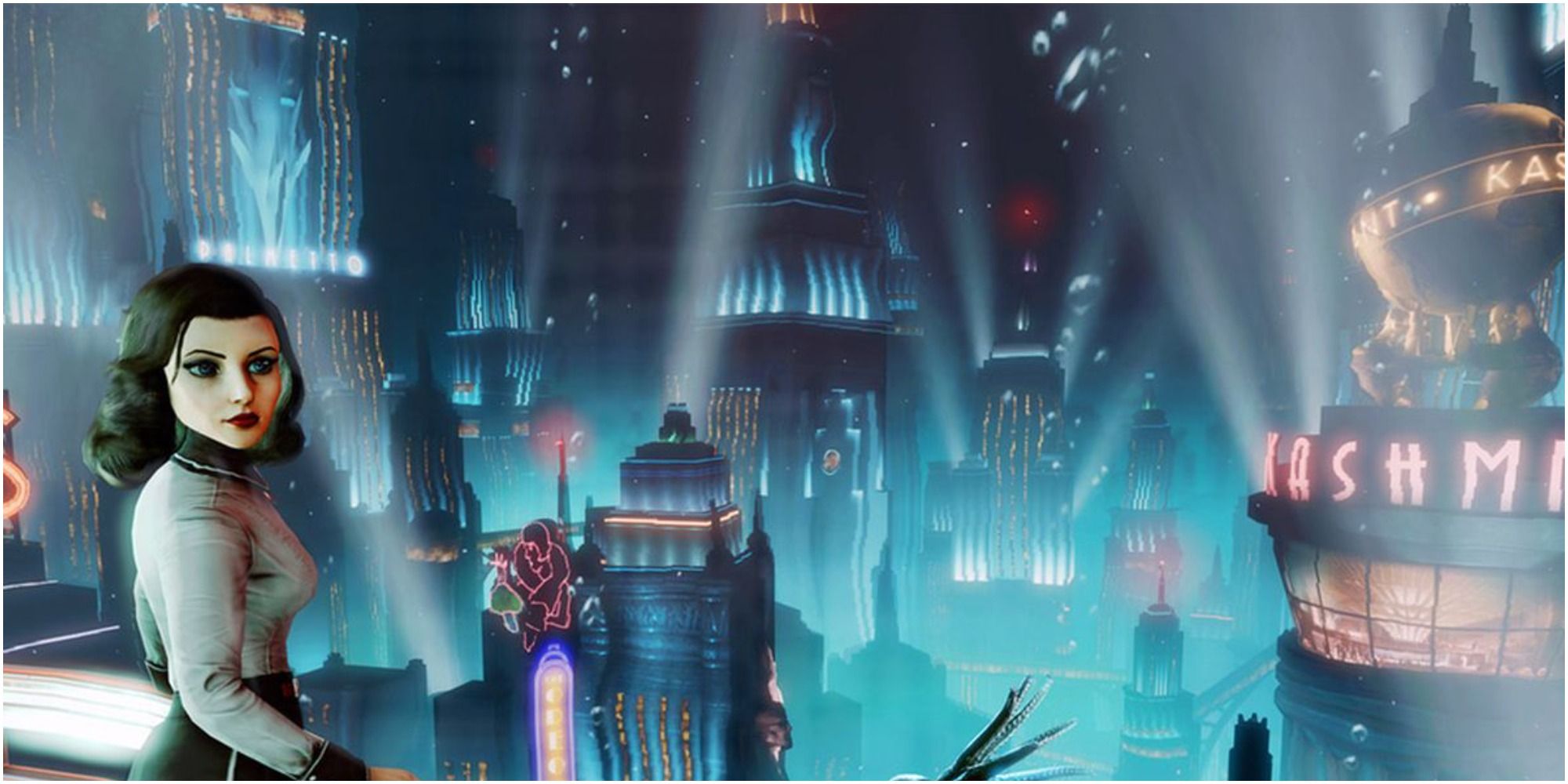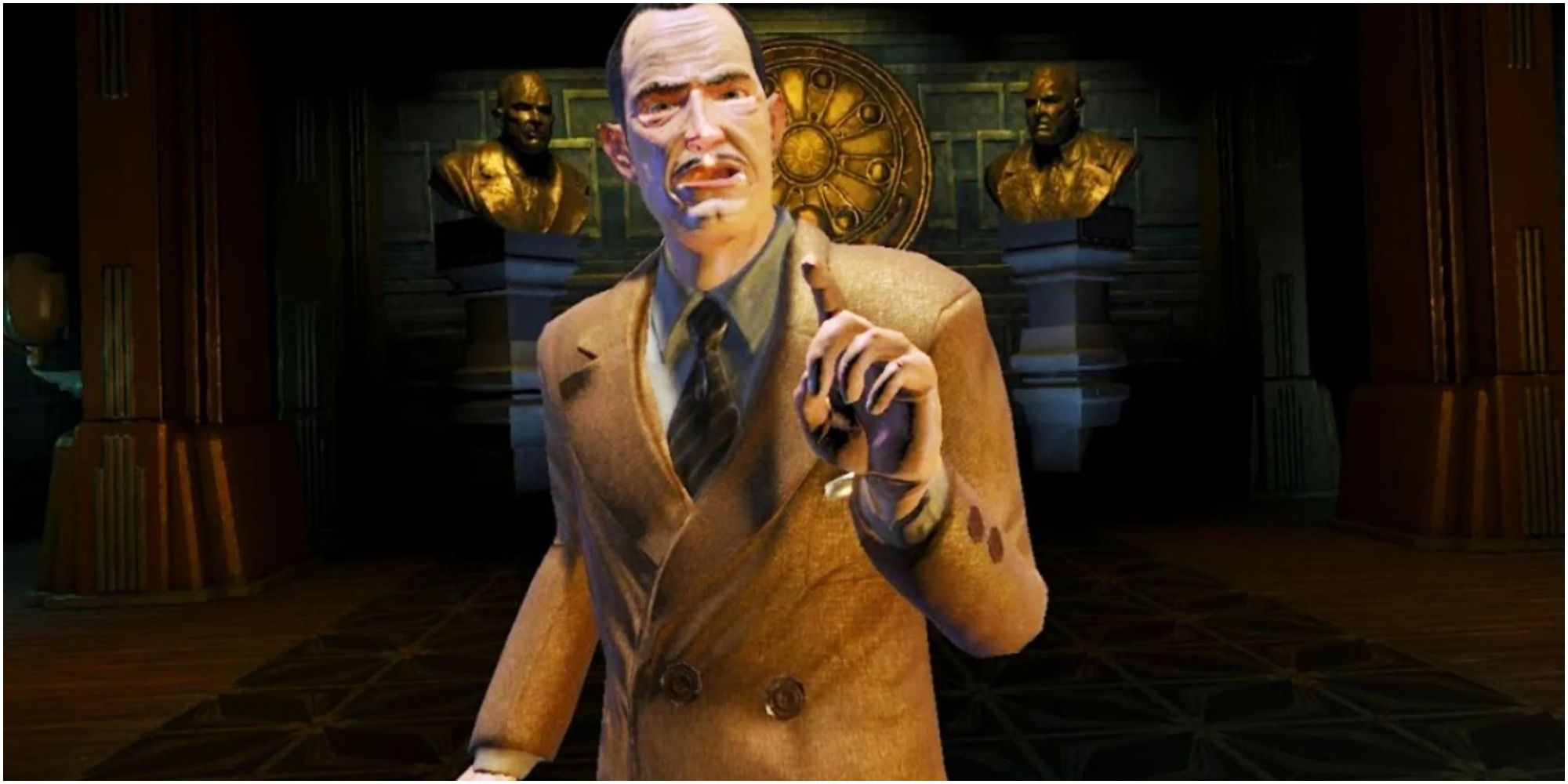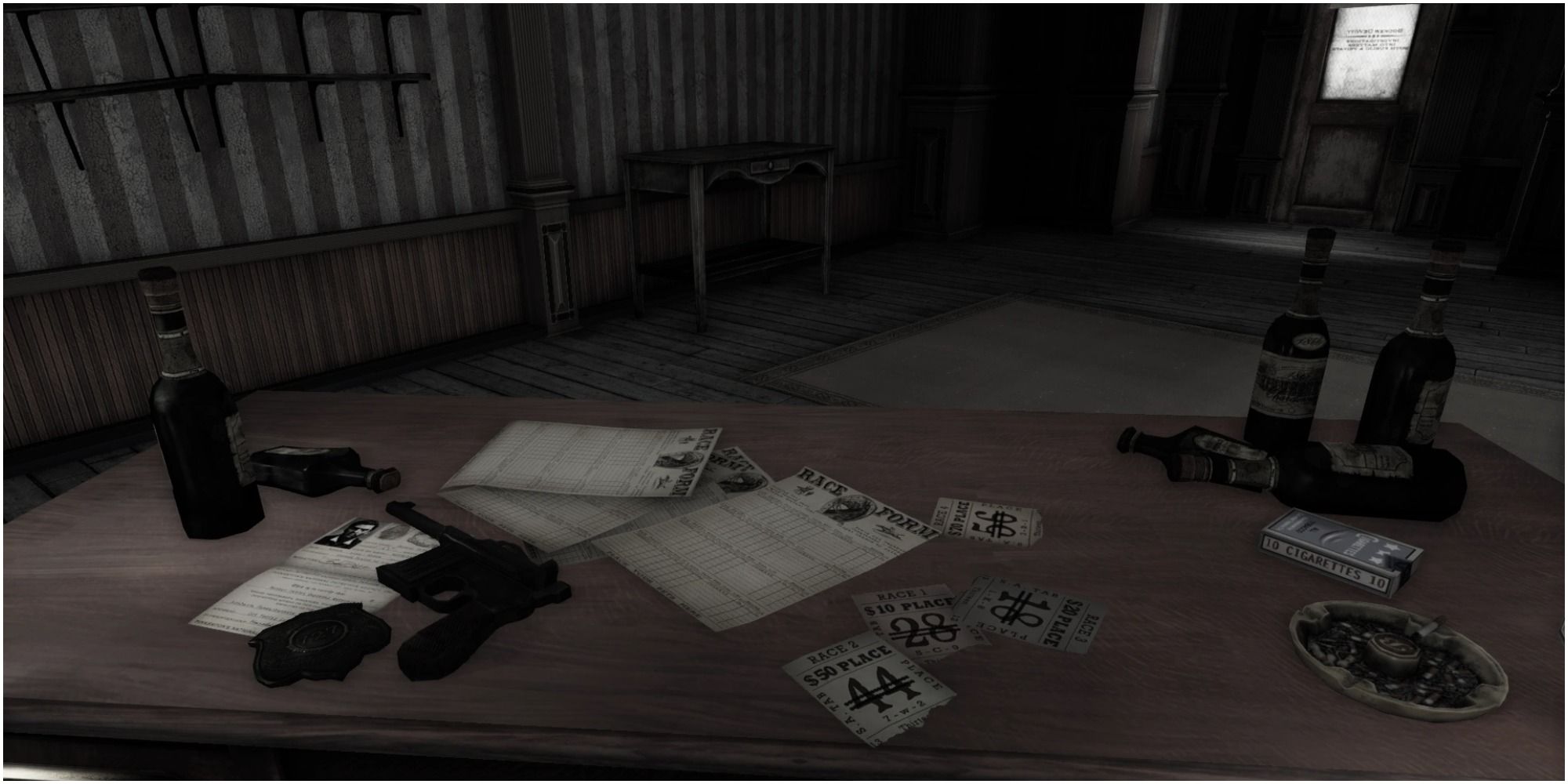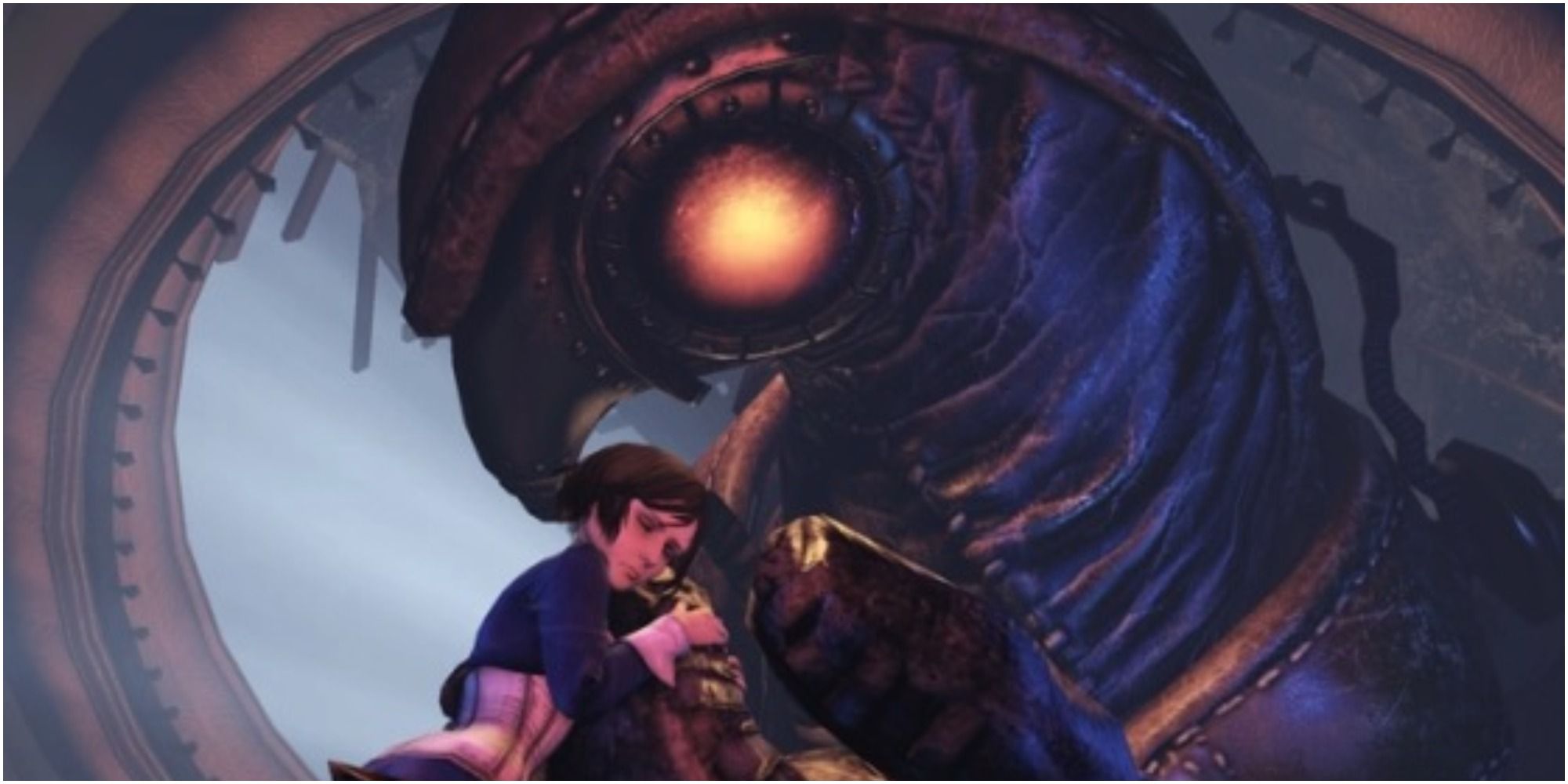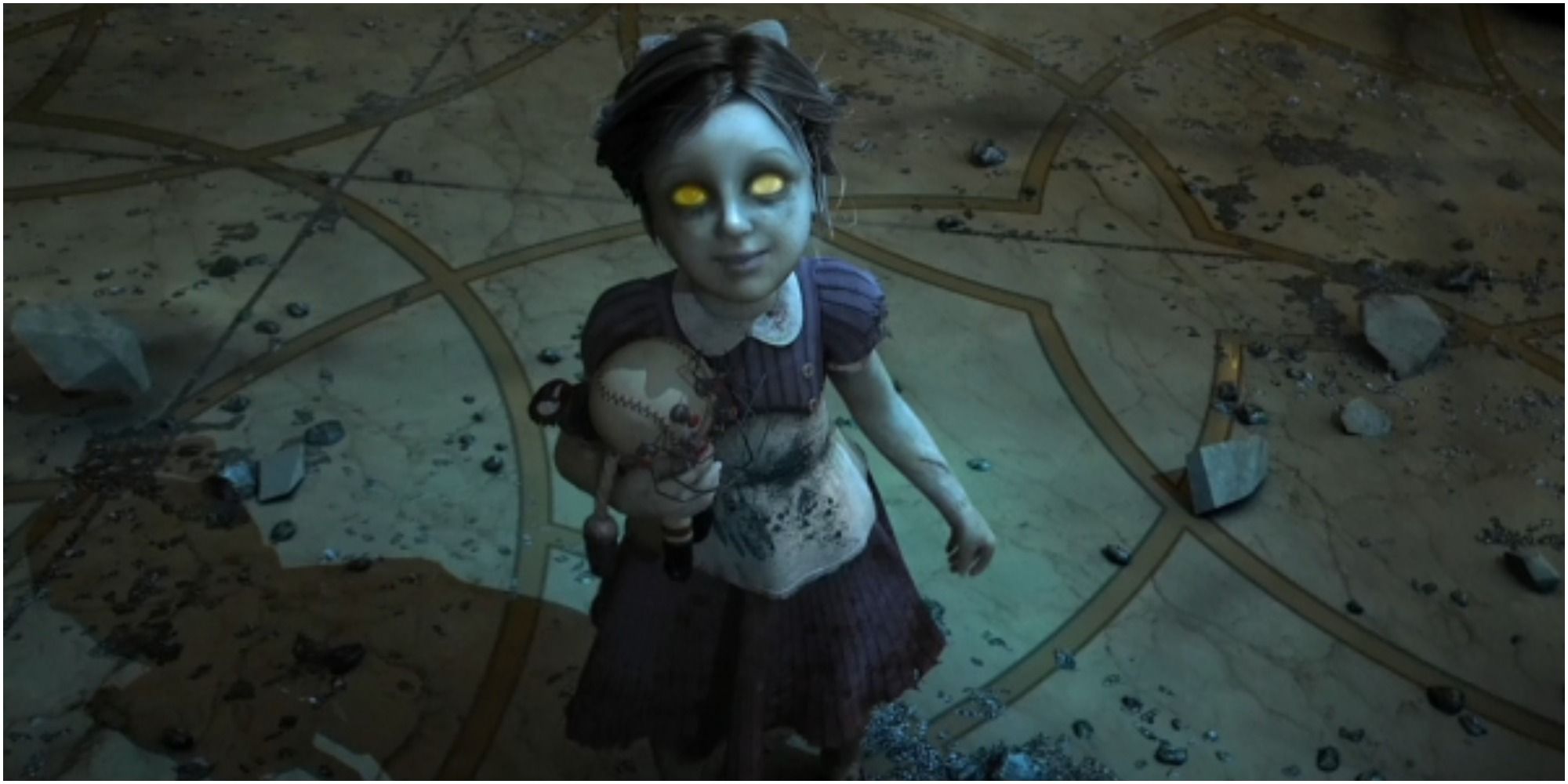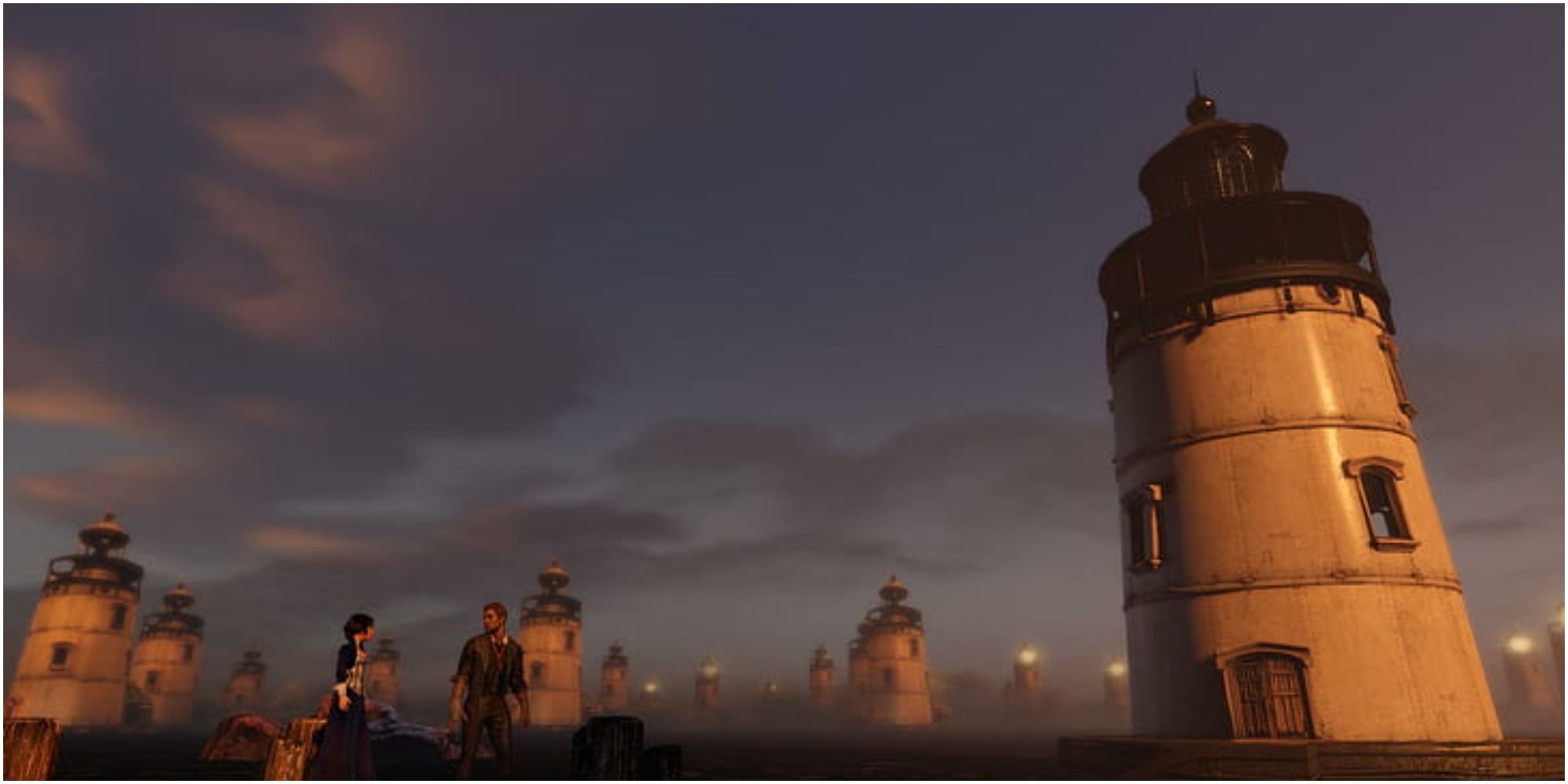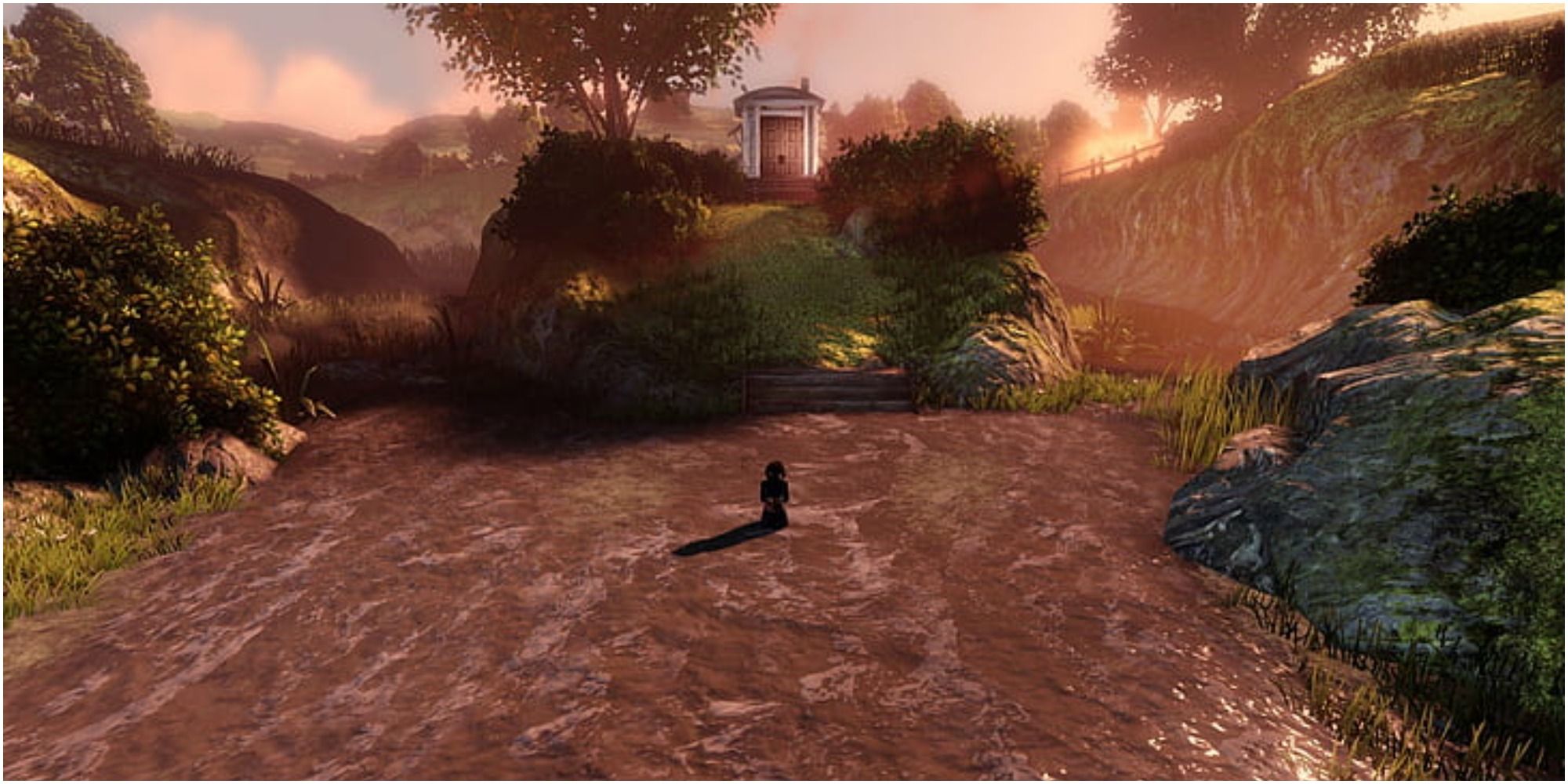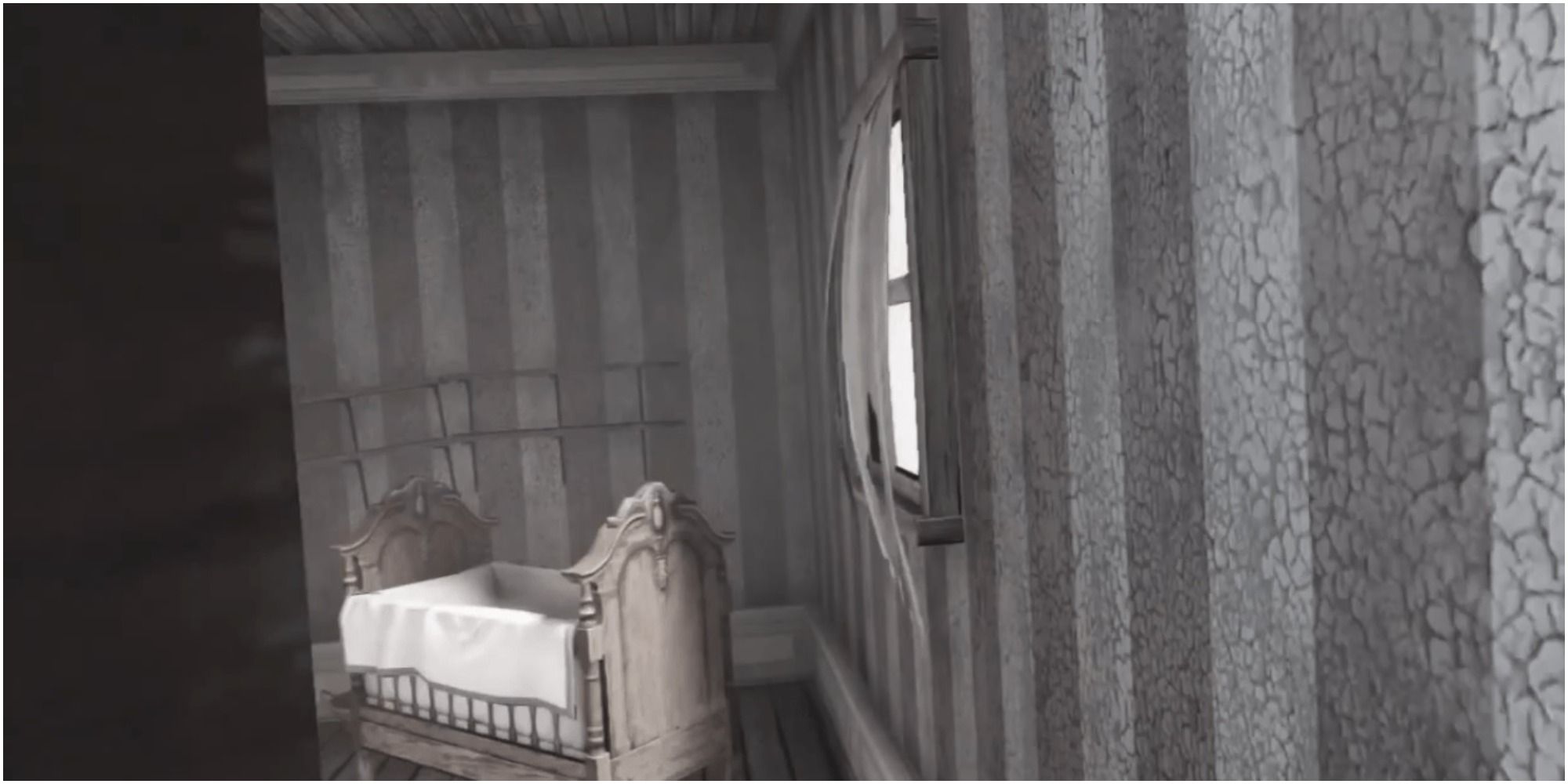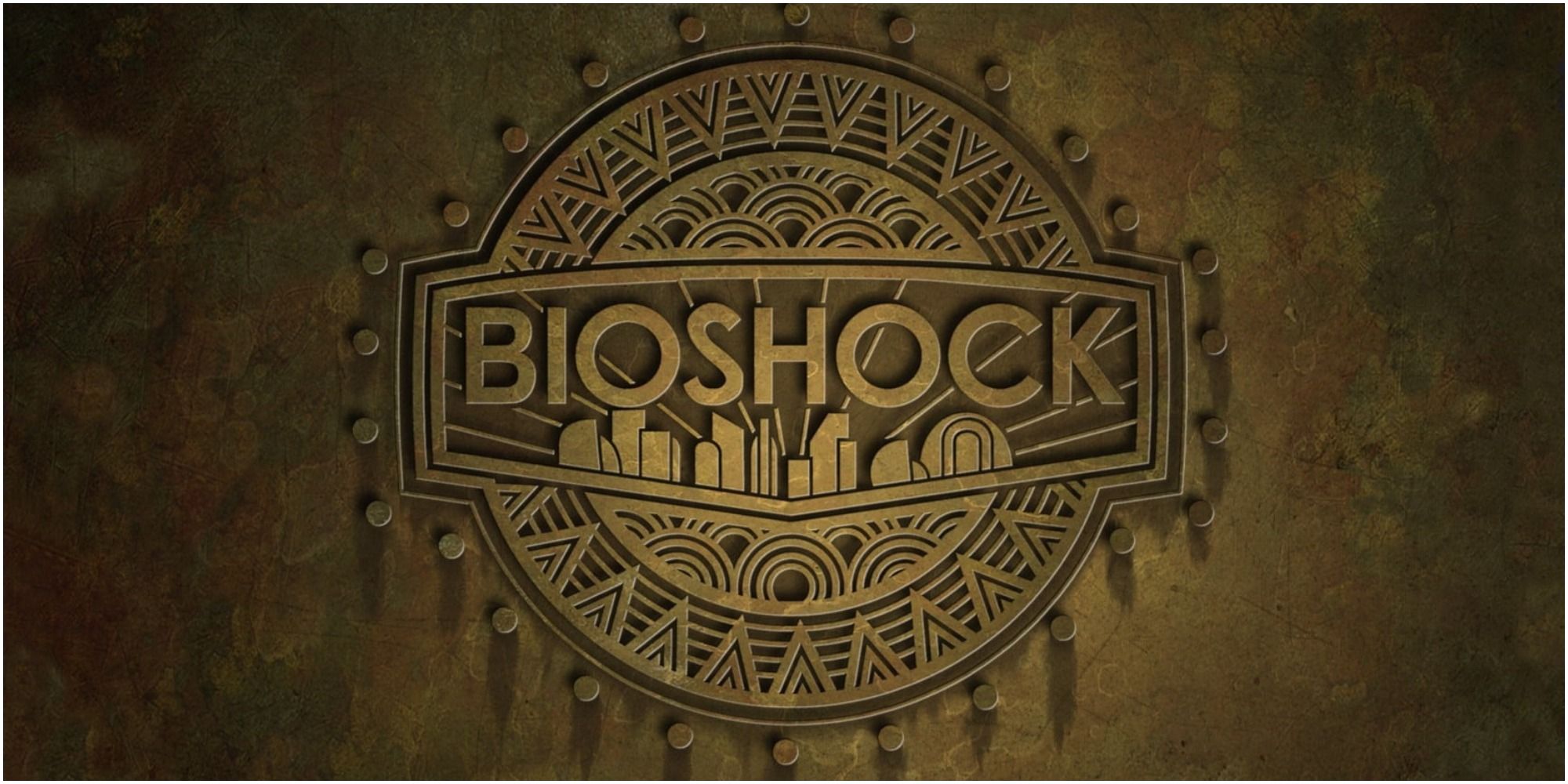The Bioshock franchise is an iconic series of first-person shooter games with intriguing narratives and deeply immersive settings. Ever since the publication of the first game in 2007, Bioshock has been a beloved name among gamers, who tout its games as some of the best in the business.
Part of what makes Bioshock's stories so fascinating is the element of mystery. Many of the events and scenes featured in the games are left open to interpretation, asking the players to come to their own conclusions. As can be expected with open-ended stories, theories surrounding the details of the series have run wild. Some are too absurd to be true, despite their interesting implications. Others, however, might just be onto something.
This list contains possible spoilers for Bioshock, Bioshock Infinite, and the Burial At Sea DLC.
10 Songbird Is A Big Daddy
Songbird is Elizabeth's warden and bodyguard in Bioshock Infinite. He is a giant mechanical bird that ensures Elizabeth remains safely locked in her tower without interference from the outside world. As players learn during the game, he is also not entirely metal.
Much like the Big Daddies of Rapture, Songbird is part man, part machine, integrated into one being. Since the games are connected by the multidimensional constants established at the end of Infinite, it would make sense for both universes to have developed the same methodology for combining humans with machines.
9 All Raptures Are Different
Rapture is featured as a setting in all three games: Bioshock, Bioshock 2, and Bioshock Infinite. But are all three the same Rapture? Keen-eyed players have noticed distinct differences between the Rapture of each game. While this could easily be chalked up to improvements in development between games, there is an equally simple in-universe explanation.
In Infinite, Elizabeth reveals to the player that there are infinite alternate universes. Some of them are differentiated by world-altering changes, while others only have small details modified. By this logic, each version of Rapture could be its own separate timeline.
8 Andrew Ryan Got Away
One of Bioshock's most iconic scenes is the player's confrontation with Rapture's creator, Andrew Ryan. It is in this moment that they learn the truth about Jack, the player-character. He is Andrew Ryan's son who was sold as an embryo by his mother and programmed with mind control trigger phrases.
Upon this revelation, Jack beats Ryan to death. Or does he? While Ryan claims he has shut down the Vita-Chambers that would allow him to return, if the player dies immediately after Ryan's death, they respawn in one of those very chambers near his office. It's entirely possible that Ryan expected Jack to kill him and used a nearby respawn point to escape Rapture unseen.
7 There Are No True Respawns In Infinite
While the respawn mechanic in the original Bioshock game is explained with its futuristic science, Infinite leans a bit more toward the metaphysical. Upon dying in the game, players return to the world through the black and white memory of Booker Dewitt's office.
When Elizabeth creates tears between worlds, they appear with the same grayscale visuals. Some fans believe that when the player dies in Bioshock Infinite, Elizabeth opens a new tear to an almost-identical universe where Booker did not make the same lethal choice and pulls that version of him through.
6 Songbird's Human Element Was Another Booker
Similarities between Songbird and Booker point to the machine-human hybrid having once been another version of the player-character, Booker Dewitt. Songbird appears to truly care for Elizabeth like a parent would. As is revealed in Infinite, Booker is Elizabeth's father.
If another universe's Booker had come to Columbia to rescue his daughter when she was still a small child, Comstock may have taken pity on him and allowed him to become Elizabeth's Songbird. That way, Booker could be with and protect his child without ruining Comstock's plans. Additionally, both Booker and Songbird die by being submerged in water while Elizabeth whispers words of comfort to them.
5 There's A Universe Where Anna Became A Little Sister
The Little Sisters of Rapture were once the most vulnerable little girls in society. Anna, the original name that Booker Dewitt gave his daughter, was certainly in a vulnerable place with her father. His grief over losing her mother led to his substance abuse and gambling debts.
In a world where he would not become Zachary Comstock, Booker may have sold his child to another buyer. Since young girls were the only viable hosts for the ADAM-producing sea slugs, Dr. Tenenbaum may have purchased Anna from Booker to create another Little Sister.
4 Columbia and Rapture Cannot Exist In The Same Timeline
Elizabeth sets up the constants of the Bioshock multiverse in the quote, "There is always a lighthouse, there's always a man, there's always a city." This would imply that, though Rapture and Columbia both fit these constraints, there cannot be more than one of these setups in each given universe.
Something in the creation of either Rapture or Columbia prevents the existence of the other from taking place and, as a result, ensures that each universe has only one lighthouse, one man, and one city.
3 There Is Still One Timeline Where Booker Becomes Comstock
Many gamers have questioned how Elizabeth doesn't disappear when she drowns Booker, preventing him from becoming Zachary Comstock. After all, if Elizabeth never grows up in Columbia and never discovers her powers on her adventure with Booker, it would create a paradox.
By the point that Elizabeth makes this discovery, she has become nigh omniscient. Her interdimensional powers grant her the ability to see all aspects of the multiverse. When Elizabeth chose to prevent Comstock from ever existing, she may have limited that action to all but one universe:of her own. That way she could quarantine off the timeline where the events of Infinite occurred and retain her abilities.
2 Booker Gets His Happy Ending
The ending of Bioshock Infinite is unusually vague. After the credits, one more cutscene initiates. The audience once again sees through the eyes of Booker Dewitt, sitting in his office. They proceed to the side room, where a lullaby plays on a music box. He calls out for his infant daughter, Anna, and approaches her crib.
The scene cuts to black before players can see if Anna is there. Despite the ambiguity, many believe that Elizabeth chose to place Booker in this timeline out of mercy so he could have a happy life with his little girl.
1 Gamers May Yet See A Fourth Bioshock Game
Though it has been almost 10 years since the last non-DLC Bioshock release, fans are not without hope. In December of 2019, 2k, the publishers behind the Bioshock franchise, announced the creation of a new studio under their umbrella, called Cloud Chamber.
At the same time, they also announced that Cloud Chamber would be the developers for the next installment in the Bioshock series. Despite their silence on the matter since then, their statement stands as a glimmer of hope for those patiently waiting for Bioshock's return.

